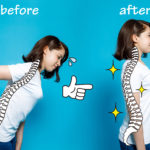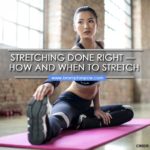Health Blog
Habitual Physical Activity and Overall Health for the Elderly

What regular physical activity can mean for elders
In the elderly population (adults aged 65 and older), engaging in habitual moderate-intensity physical activity is considered one of the most important components of a healthy lifestyle. Its benefits are multifold: it enhances quality of life and prolongs independent living, and is also associated with a reduced risk of various chronic health conditions including musculoskeletal and cardiovascular disease, as well as cancer. Though it's widely recommended that members of the elder community participate in activity regularly, a consensus on the optimal intensity level and duration has yet to be reached. In Nakanojo, Japan, an average-sized town not far from Tokyo, a major study was performed based off of this lack of common ground. The study was designed to: a) establish overall patterns of physical activity most closely associated with good health and the absence of disease in the elderly, and b) identify personal, social and environmental influences allowing sufficient physical activity to maintain physical condition and delay the aging process.
Participation requested from all members of elderly community
Of the 17,491 residents of Nakanojo, 29.1% were aged over 65, and each one was asked to participate in the study. A total of 5,000 elders responded to the invitation and comprised the study group. Each participant was instructed to complete a simple conventional physical activity questionnaire once a year for nearly eight years, with another sub-group being continuously monitored 24 hours a day using a customized pedometer/accelerometer. Physical activity levels were taken according to metabolic equivalents (MET), a standard measurement for energy exertion used to determine how much effort goes into a particular activity. Three arbitrary groups were created for the elderly subjects in the study of low (<3MET), moderate (3-6 MET) and high (>6 MET).
Exercise patterns affected by gender, physical and mental health, and weather
Data from the study found a number of interesting factors that influenced exercise habits and prevented some from engaging as regularly as they should have. Yearlong figures from the pedometer/accelerometer showed that men were 20-30% more active than women, with males averaging 7,000-8,000 steps/day compared to 6,000-7,000 steps/day for females. Men were also logged more time in both <3 and >3 MET activities regularly. Other pieces of data showed that physical and psychosocial health and poor health-related quality of life (HRQOL) are also related to the intensity and total volume of habitual physical activity undertaken. Negative impacts from these factors, however, are less likely if certain minimal standards are met: 4,000-5,000 steps/day and/or at least 5-7 min./day at an intensity of >3 MET. These standards were not met by the majority of those in the study with mental issues, as all subjects but one who suffered from depression walked fewer than 4,000 steps/day. Further research is needed on this topic to determine if mood affects physical activity level or vice versa. Weather was also shown to play a major part in habitual exercise trends, with direct correlations existing between rainfall and temperature to physical activity levels. Findings showed participants were most active at temperatures around 62°F and with the lowest levels of rainfall, suggesting that when these conditions aren't met outside, seniors should consider mild indoor activities such as mall walking.
Aside from the numbers mentioned above to avoid mental health issues and poor HRQOL, the following figures were established for a threshold amount of habitual physical activity to improve physical health: 7,000-8,000 steps/day and/or at least 15-20 min./day at an intensity >3 MET for both men and women. For optimum cardiovascular and musculoskeletal function, physical activity levels of walking 8,000-10,000 steps/day and/or exercising for 20-30 min./day at an intensity of >3 MET are recommended. A universal exercise program for the elderly should be designed keeping with these variables close at mind. Since men's health is more associated with the daily duration of activity >3 MET and women's is closer associated with daily step counts, gender-specific programs should be based on these characteristics. Alternate options should be presented for times in which weather conditions aren't ideal, and mental and pre-existing physical health, as well as the figures determined for threshold and optimal health should also be kept in close consideration in laying out these programs. Once established, spreading information on this topic can drastically help the elderly community avoid numerous conditions and improve their mental and physical health, as well as overall HRQOL, by following a relatively feasible set of recommendations.
-As reported in the June rgiul'10 edition of Geriatrics & Gerontology International
September 1, 2011
Back to Health BlogHEALTH BLOG
- A Personalized Physical Therapy Program Can Assist with Whiplash
- Why Older Adults Should Incorporate an Exercise Program
- After an Achilles Injury, Physical Therapists Can Help with Recovery
- AI Can Answer Questions But It’s Best to See a Physical Therapist
- Physical Therapy Can Help With Symptoms of Wryneck
- Reduce the Risk of Pickleball Fractures By Taking Proper Precautions
- Physical Activity May Slow the Progression of Parkinson's Disease
- Too Much Salt in Your Diet? Learn the Dangers of High Sodium Intake
- Suffer From Lower Back Pain? Might Be Time to Take A Break
- The Road to Recovery: Preventing Re-Injury After ACL Surgery
RECENT ARTICLES

- 11 Possible Reasons Your Back HurtsJune 22, 2020

- What Conditions Can a Chiropractor Treat?May 25, 2020

- A Simple Guide to Better PostureApril 30, 2020

- Is Acupuncture Right for Me When I’m Afraid of Needles?March 30, 2020

- Stretching Done Right — How and When to StretchFebruary 26, 2020

